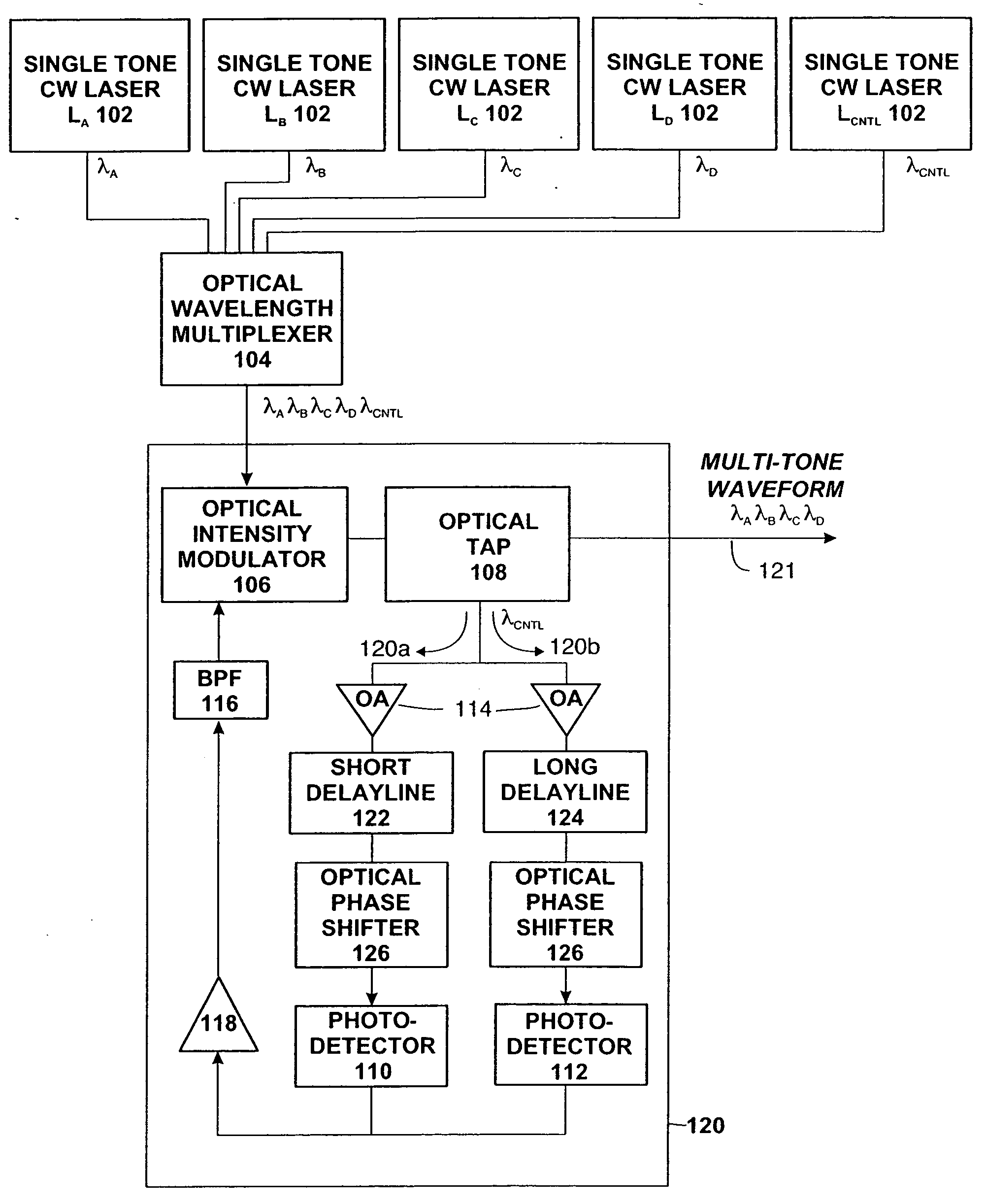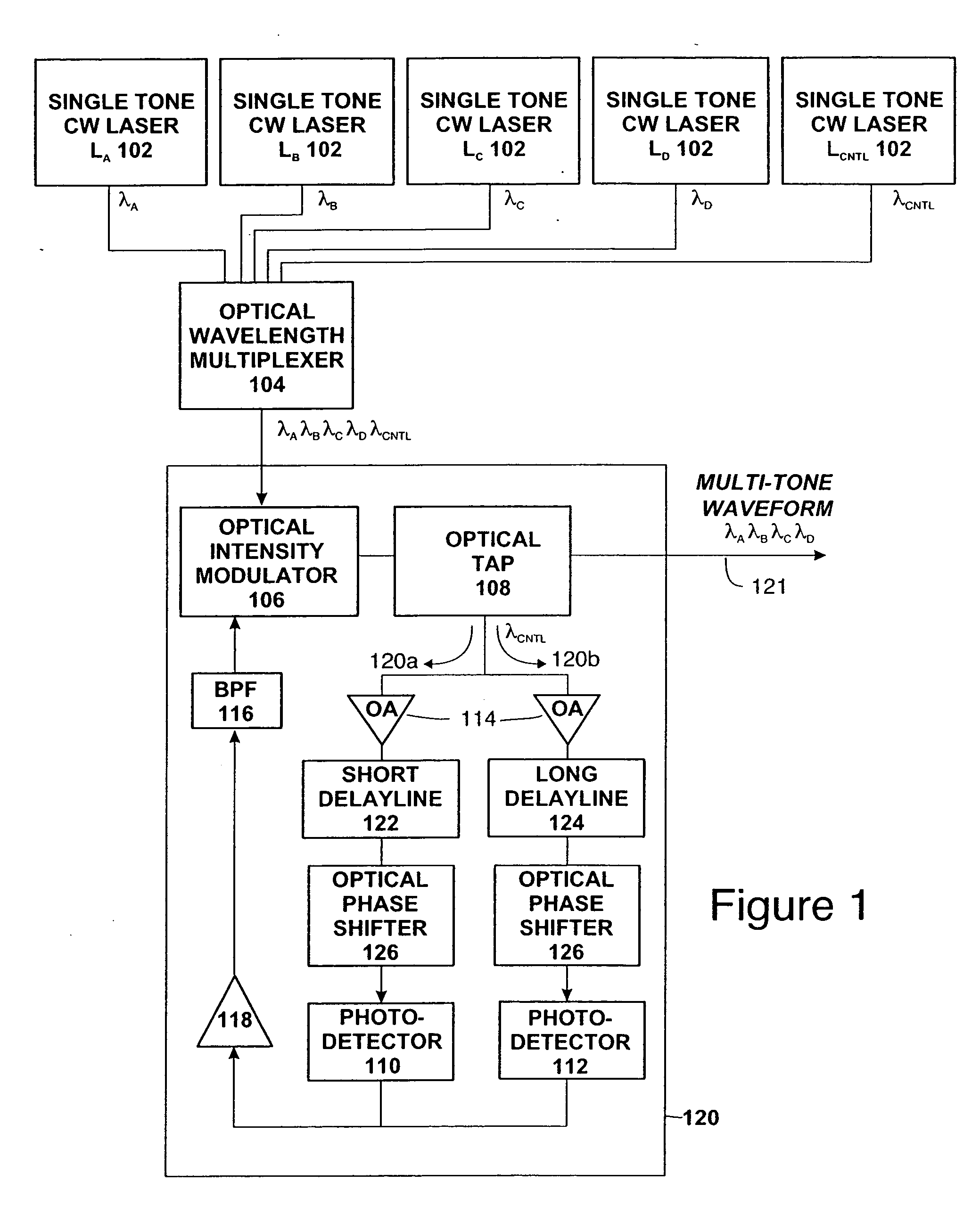Multiple wavelength photonic oscillator
- Summary
- Abstract
- Description
- Claims
- Application Information
AI Technical Summary
Benefits of technology
Problems solved by technology
Method used
Image
Examples
first embodiment
[0030] Another embodiment of the MWPO 100 is illustrated in FIG. 2. This MWPO 100 comprises multiple lasers 102 (which emit at different wavelengths or optical frequencies), an optical wavelength multiplexer 104, an optical modulator 106 and photodetectors 110 and 112 connected as a closed feedback loop 120. The loop 120 optionally includes optical amplifiers 114 and / or electronic amplifiers 118, optical phase shifters 122, 124 and / or electronic phase shifters (not shown, but would occur in the electronic portion of the loop) and filters 116. A portion of the laser light in all of the laser wavelengths (e.g., λA, λB, λC, λD) is diverted into the feedback path 120 by an optical splitter 108′. The remaining portion of the laser light in all of the wavelengths is provided as an output 100a of the MWPO 110. These wavelengths can be associated with and supplied to various pairs of laser diodes for optical injection locking (as illustrated in FIG. 5). They also can be associated with vari...
second embodiment
[0031] The main distinction between the two embodiments of FIGS. 1 and 2 is that in the second embodiment all of the wavelengths are coupled into the feedback loop 120. Thus, the total amount of optical power carried in the loop determines that total photodetector current for the loop. The optical splitter 108′ controls the amount of power diverted into the loop 120. Note that the optical amplifiers 114, optical phase shifters 126, 128 and photodetectors 110, 112 must be compatible with the various wavelengths of the light coupled into the loop 120.
[0032] The reason that this second embodiment is less preferred than the first embodiment is the increased constraints this embodiment places on the wavelengths and powers of the lasers 102. Otherwise, both embodiments should provide suitable signals for the various applications described herein.
[0033] In the case of the first embodiment, the only restriction placed on the lasers LA-LD that supply the light wavelengths that are output fr...
PUM
 Login to view more
Login to view more Abstract
Description
Claims
Application Information
 Login to view more
Login to view more - R&D Engineer
- R&D Manager
- IP Professional
- Industry Leading Data Capabilities
- Powerful AI technology
- Patent DNA Extraction
Browse by: Latest US Patents, China's latest patents, Technical Efficacy Thesaurus, Application Domain, Technology Topic.
© 2024 PatSnap. All rights reserved.Legal|Privacy policy|Modern Slavery Act Transparency Statement|Sitemap



